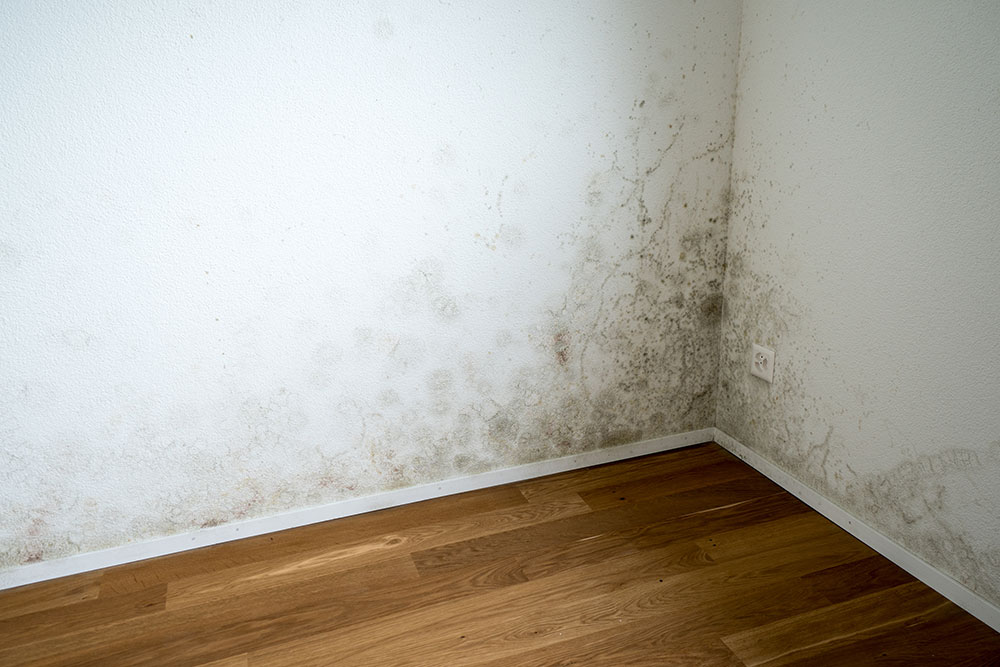Mould warning for homeowners
What you need to know to remove dangerous mould safely from your home.

South-east Queenslanders impacted by floods and rain events have been urged to look out for mould in their homes.
The combination of heat, humidity and water can cause mould to appear in the weeks and months following wet weather.
University of Sydney Infectious Disease Specialist Dr Justin Beardsley said breathing in, eating, drinking or touching mould could cause health issues.
“Exposure to fungal spores, released by the moulds that surround us in everyday environments, is increasingly recognised as a cause of ill-health,” Dr Beardsley said.
“Diseases range from allergy-driven worsening of asthma, through long-term low-grade infections, to serious invasive infections.
“People with other health conditions, especially those with lung disease or taking immuno-suppressing medication, are particularly at risk and are advised to avoid heavy exposure to fungal spores wherever possible.”
Identifying mould
Mould often discolours wall, ceilings and other surfaces but may also be present when you can’t see it.
You may be able to detect a musty or unpleasant odour even if mould isn’t visible.
Air out the room
The first step to removing mould is drying out the area as quickly as possible.
Open windows and use fans to speed up the process.
Removing mould from hard surfaces
It’s essential to follow safety precautions, including wearing appropriate protective equipment such as safety goggles, gloves and a disposable respirator with a P1 or P2 filter.
Your home and contents insurance may cover the removal of mould if it is determined to be the result of flooding or storm damage.
The Queensland Government Department of Housing recommends the following steps to remove mould from walls, ceilings and hard surfaces:
- Obtain personal protective equipment, including half-face disposable respirators with P1 or P2 filters, to avoid inhaling mould spores when cleaning. You’ll find these at hardware stores.
- Place drop sheets on the floor and exclude people from the affected area if they’re not performing the work.
- Get two buckets: one for cleaning solution and one for clean water.
- Wipe the area clean with a microfibre cloth and cleaning solution. Don’t put dirty cloths back in the solution; rinse them in the clean water to avoid cross-contamination.
- After cleaning the area with the solution, wipe the surface with a damp cloth. Don’t use the same cloth you used with the solution.
- Wipe the surface dry with a clean cloth.
Remove mould using a suitable mould remover, such as:
- A solution of three parts vinegar and two parts water.
- A solution of 70% methylated spirits and 30% water.
- A solution of tea tree oil and water.
- Commercial products from the supermarket. Follow the safety instructions to protect your eyes and skin.
Removing mould from household items
- Items that can be washed, such as soft toys and linen, should be machine washed as usual.
- Non-porous items like glassware can be washed in hot water with a bleach solution and air dried. Make sure your dishwasher is cleaned and disinfected before use.
- Air conditioning units should be cleaned and serviced by a professional before use. Using the air conditioner without cleaning it can spread mould spores through the air.
- Items that can’t be easily cleaned should be thrown out if they have been wet for more than two days.
- If in doubt, take your items to a professional cleaner.
Salvaging photos, books and family heirlooms
Water-damaged family heirlooms such as photos, books, paintings and letters can be prone to mould outbreaks. If you can’t bear to throw out a mouldy heirloom, the State Library of Queensland has developed a guide to assist Queenslanders to treat mould-affected material.
Source: Queensland Government Community Support, Department of Housing
Related topics
Things to note
The information in this article has been prepared for general information purposes only and is not intended as legal advice or specific advice to any particular person. Any advice contained in the document is general advice, not intended as legal advice or professional advice and does not take into account any person’s particular circumstances. Before acting on anything based on this advice you should consider its appropriateness to you, having regard to your objectives and needs.
Insurance Products (excluding Travel Insurance) are issued by RACQ Insurance Limited ABN 50 009 704 152 (RACQI) and arranged by its agent, RACQ Distribution Services Pty Ltd (RDS) ABN 35 116 361 650, AFSL 567130 and RDS' authorised representatives (including RACQ Operations Pty Ltd ABN 80 009 663 414, AR No. 234978 (RACQO). Conditions, limits and exclusions apply. RDS and RACQO are in the RACQ group of companies. One of the companies in the RACQ group of companies has a minority shareholding in RACQI.
RDS and RACQO have not taken your personal objectives, circumstances or needs into account when preparing advice regarding insurance products and you will need to consider whether the advice is appropriate for you. Read the Product Disclosure Statement (PDS) and any applicable Supplementary PDS before making a purchase decision on this product. You can also access our Target Market Determinations on this website. RDS receives a commission from RACQI for the policies it arranges. RACQO receives fees paid for services it provides to RDS. Further details about remuneration are available on request prior to purchasing.
Banking and loan products issued by Members Banking Group Limited ABN 83 087 651 054 AFSL/Australian credit licence 241195 trading as RACQ Bank. Terms, conditions, fees, charges and lending policies apply. This is general advice only and may not be right for you. This information does not take your personal objectives, circumstances or needs into account. Read the disclosure documents for your selected product or service, including the Financial Services Guide and the Terms and Conditions, and consider if appropriate for you before deciding.
Except for RACQ Bank, any RACQ entity referred to on this page is not an authorised deposit-taking institution for the purposes of the Banking Act 1959 (Cth). That entity’s obligations do not represent deposits or other liabilities of RACQ Bank. RACQ Bank does not guarantee or otherwise provide assurance in respect of the obligations of that entity, unless noted otherwise.
RACQ Bank subscribes to the Customer Owned Banking Code of Practice which establishes higher standards than the law requires. The Code reflects modern consumer expectations and developments in approaches to issues such as consumer vulnerability, guarantors, and supporting customers through financial hardship. Please read our Customer Owned Banking Code of Practice page for more information.
RACQ Operations Pty Ltd (ABN 80 009 663 414 AR 000234978) and Members Travel Group Pty Ltd (ABN 45 144 538 803 AR 000432492) are acting as an Authorised Representative of the issuer of the insurance, Tokio Marine & Nichido Fire Insurance Co., Ltd. (ABN 80 000 438 291 AFSL 246 548). Any advice set out above is general in nature only, and does not take into account your objectives, financial situation or needs. Before purchasing any travel products, please consider the RACQ Travel Insurance Product Disclosure Statement (PDS) and the Target Market Determinations (TMDs) that apply to these products. Whilst the PDS outlines the Terms and Conditions of these products, the TMDs outline the intended class of customers that comprise the target market for these travel products. This will allow you to consider which products best suit your objectives, financial situation and needs and consider the products appropriateness to your personal circumstances. TMDs also outline matters involving the distribution and the review of these products. The PDS, Supplementary PDS and TMDs for each travel product can be found here.
